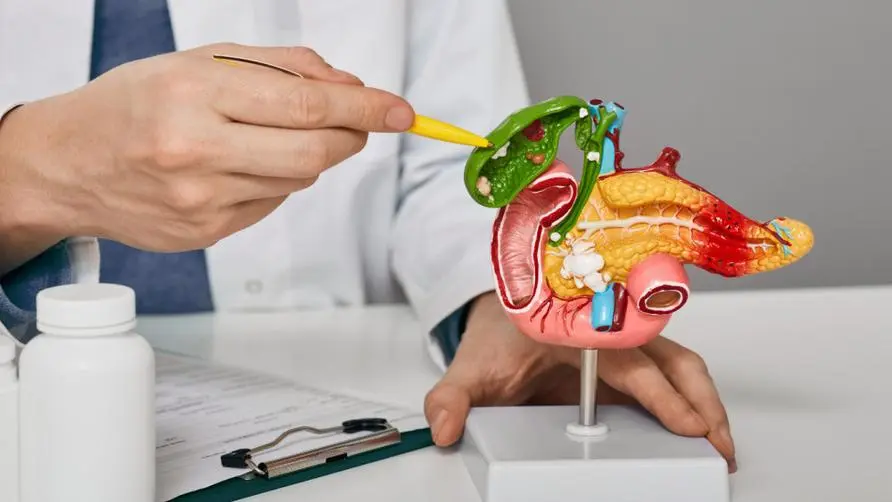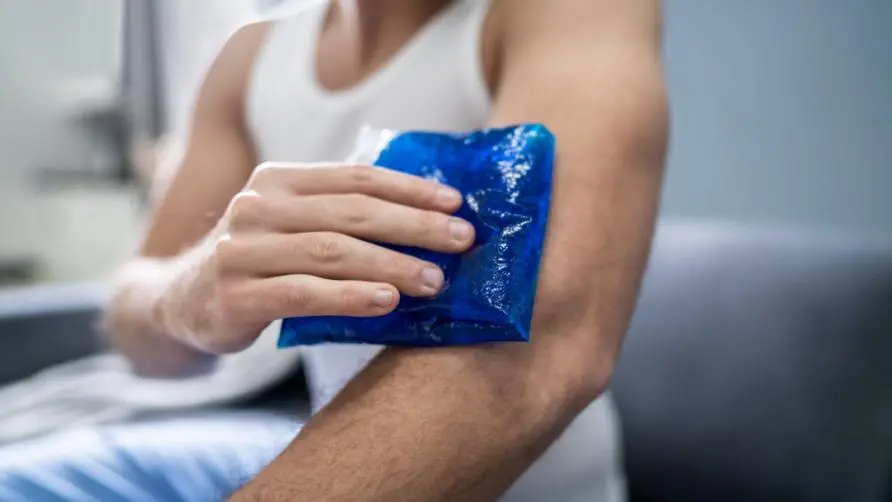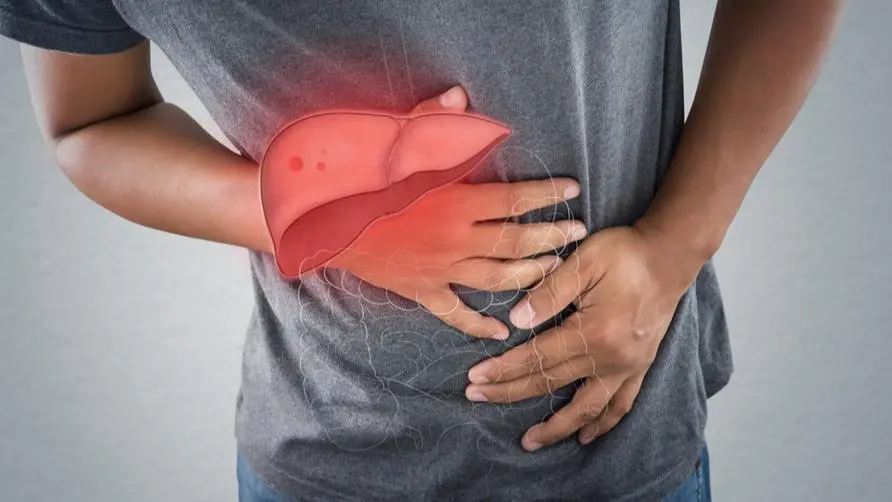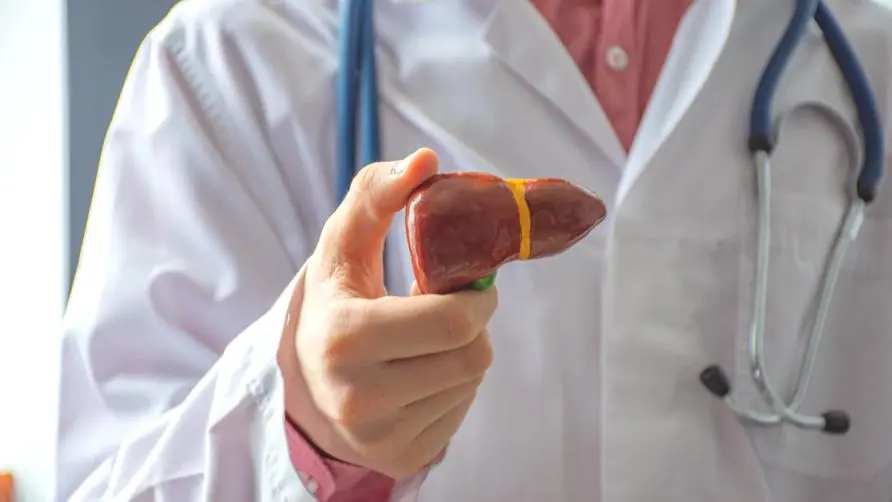Being hospitalized for repeated stones turned out to be cholangiocarcinoma! Doctors reveal the top ten culprits of cholangiocarcinoma: Drinking 1 drink increases the risk by 1.8 times

Is it difficult to detect with ultrasound? Doctors reveal why cholangiocarcinoma is difficult to diagnose early
Cholangiocarcinoma is a cancer that occurs in the liver. Although its incidence rate is lower than that of liver cancer, its number has gradually increased in recent years. Dr. Qian Zhenghong, director of the Liver Disease Prevention and Treatment Center of Keelung Chang Gung Memorial Hospital, posted on the social media that bile ducts are like small blood vessels distributed in the liver. Many small bile ducts converge into thicker bile ducts. There is an “intrahepatic” bile duct in each of the right and left lobes of the liver. The lower edge of the bile duct merges into the “common bile duct”, which is about 7-10 cm long. The lower end enters the pancreas and then merges with the pancreatic duct to lead to the duodenum. The opening in the duodenum is called the “ampullary” .
Dr. Qian Zhenghong pointed out that according to the location of the cancer, cholangiocarcinoma can be divided into “intrahepatic cholangiocarcinoma” and “extrahepatic cholangiocarcinoma”, and the clinical manifestations of the two are different. About 78% of intrahepatic cholangiocarcinomas form masses and can be detected using abdominal ultrasound, but 16% grow along the bile duct and 6% are hidden inside the bile duct, making it difficult to detect with ultrasound.
Since a large section of the hilar bile duct and common bile duct are behind the duodenum and inside the pancreas, “extrahepatic cholangiocarcinoma” is easily obscured by air and difficult to detect during ultrasound. This is why cholangiocarcinoma is not easy to detect early. The reason for diagnosis is that some cholangiocarcinomas are not discovered until tumors appear one after another after metastasis to the liver. What is even more noteworthy is that approximately 90% of bile ducts are extrahepatic cholangiocarcinoma, making treatment and prognosis even less ideal.
Do you like to drink sugary drinks due to stones or diabetes? Top 10 risk factors for cholangiocarcinoma
Dr. Qian Zhenghong said that risk factors related to cholangiocarcinoma can be roughly divided into 10 items. Intrahepatic bile duct stones and common bile duct stones will increase the risk of cholangiocarcinoma. In particular, intrahepatic bile duct stones are often accompanied by “liver abscess”, and long-term bile duct inflammation will increase the risk of cancer. Statistics show that about 50-70% of intrabiliary cholangiocarcinomas are related to stones. In addition, about 10% of gallstones (gallbladder stones) will be combined with common bile duct stones, which will also increase the risk of cancer.
In addition, viral hepatitis (hepatitis B, hepatitis C) will increase the risk of cholangiocarcinoma. It is recommended that patients with hepatitis B and hepatitis C should not only test alpha fetal protein (AFP), but also test the bile duct cancer index (CA19-9). Other factors that increase the risk of cholangiocarcinoma include cirrhosis, alcoholic liver disease, smoking, Helicobacter pylori infection, exposure to toxic substances (such as pesticides, chemical plastics, rubber, printing paint, 1,2-dichloropropane), and even cleaning It is also recommended to smell less volatile chemicals such as solvents and printer toner.
Diabetes is the most common chronic disease among Taiwanese people, and diabetes is related to the risk of cholangiocarcinoma. Dr. Qian Zhenghong said that statistics have found that the risk of cholangiocarcinoma in patients with diabetes is 1.6 times higher than that of the general population. A 2019 Swedish study also pointed out that drinking more than 2 cups of sugary drinks per day will increase the risk of cholangiocarcinoma by 1.8 times and 2.2 times. Risk of gallbladder cancer.
Could urine color change and jaundice be a tumor? Possible symptoms of cholangiocarcinoma
Dr. Qian Zhenghong said that the common symptoms of cholangiocarcinoma can be divided into four categories. First, jaundice, tea-colored urine, and gray-white stools. When the tumor blocks the bile duct, the bile cannot be discharged smoothly, causing symptoms of jaundice, tea-colored urine, and gray-white stools. However, It usually indicates that the tumor has grown to a certain size, and intrahepatic cholangiocarcinoma does not cause jaundice. When biliary obstruction or jaundice is suspected, blood can be drawn to test bile pigment and alkaline phosphatase (ALK-P).
Second, pain in the right upper quadrant. Severe pain in the right upper quadrant is usually more like stone pain, and patients with cholangiocarcinoma pain will describe the pain as “stuffy” and “swelling.” Third, itchy skin is related to cholestasis. When bile salts are deposited on the skin, it will cause itching, especially on the palms and soles of the feet. Fourth, loss of appetite, weight loss, and inability to discharge bile can cause indigestion and affect normal nutrient absorption.
Being hospitalized for repeated stones turned out to be cholangiocarcinoma! Checkup items to prevent cholangiocarcinoma
People who have long-term gallbladder stone problems should pay more attention to the risk of cholangiocarcinoma. Dr. Qian Zhenghong pointed out that in the past, he treated a man in his 70s who had suffered from gallbladder stones for many years and needed to be hospitalized for antibiotic treatment every other year. In the past two weeks, the old man had vomited whenever he ate, and had upper abdominal pain and change in appetite. Due to the poor symptoms, I thought it was the recurrence of gallstones. After a computerized tomography examination, it was discovered that there was a 3.8-cm cholangiocarcinoma at the porta hepatis extending upward, requiring surgery and chemotherapy.
Dr. Qian Zhenghong reminds those over 40 years old who have a history of liver disease, gallstones or occupational exposure to chemicals that require long-term exposure. They should pay attention to whether the color of their urine is normal and self-test whether they have symptoms of jaundice. When drawing blood, you can pay attention to bile pigment (Bilirubin) and alkaline phosphatase (ALK-P), or simultaneously evaluate the bile duct cancer index CA19-9 and CEA, which will help early detection of cholangiocarcinoma.
Dr. Qian Zhenghong calls on you to prevent cholangiocarcinoma. It is recommended to drink less sugary drinks in your daily diet. If you have gallstone disease, it is recommended to eat less raw stones and pay more attention to dietary hygiene to prevent bacteria or parasites from traveling up the duodenum along the bile duct. running, causing inflammation and suppuration of the gallbladder, bile duct or liver, and long-term bile duct inflammation is one of the main risks of cholangiocarcinoma.
Further reading:





